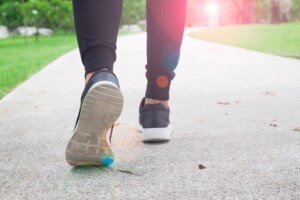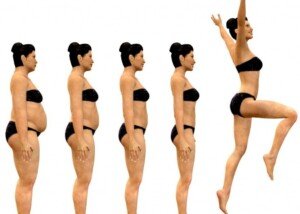A study finds that adding a moderate amount of steps to one’s daily total in the elderly can lower their blood pressure.
A natural approach to lowering high blood pressure (hypertension) for people over 65 will not come with any possible negative side effects such as drowsiness, cough or constipation.
This natural treatment for lowering high blood pressure is that of simply adding more steps to one’s daily life.
How many more steps? It’s 3,000, and you can accumulate 3,000 more steps in many ways.
A study — whose authors include Linda Pescatello, a kinesiology (muscle science) professor at UConn’s College of Agriculture, Health and Natural Resources – found that an addition of 3,000 steps a day can significantly lower high blood pressure in people 68-78.
Pescatello points out in the paper that conventional exercise lowers resting blood pressure.
The research team wanted to know if this same effect could be brought on by simply increasing one’s daily walking step tally.
The appeal of walking, especially for senior age adults, is that it’s something they’ve already been doing every day of their life and doesn’t require training or equipment.
The study participants were people between 68 and 78 who were sedentary and got in an average of only 4,000 steps a day prior to the study.
The goal of adding specifically 3,000 steps was determined by one of the study authors, Duck-chun Lee after some personal research.
The American College of Sports Medicine (ACSM) recommends 7,000 steps a day as part of an optimal health program.
Because the study took part during COVID isolation, each participant received a pedometer, a blood pressure monitor and a step diary for tracking steps.
Adding Daily Steps Lowers High Blood Pressure
On average, the “top” and “bottom” blood pressure number for the subjects was lowered by an average of seven and four points, respectively.
The top number is the systolic pressure; the bottom is the diastolic.
Even the participants who’d already been taking hypertension drugs prior to the study saw a reduction in their numbers.
Pescatello points out in the paper that a previous study showed that the effects of hypertension drugs are boosted with exercise.
How to Add 3,000 Steps a Day

Freepik.com/senivpetro.
• The total is what counts. So if you do two, 1,500 step sessions – or – simply walk more throughout the day and end up with 3,000 more than your usual, you’ll get the same benefit.
• Thus, gaining the 3,000 will yield benefits whether it’s by adding bowling and dog walking to your day or setting a timer multiple times throughout the day and walking around in your backyard or inside your house for 10 minutes.
• As long as the total is 3,000 more than your average, you’ll get the blood pressure benefits.
• Speed of walking doesn’t matter.
• A good way to know if you’ve added 3,000 is to track your steps with a pedometer, a small device that clips onto your pants to record hip movement.
• Steps can be accrued by pacing while watching TV or on the phone, parking far from store entrances, using a staircase instead of an elevator, and walking a dog further than you’d normally walk it.
• It could also include making a point to walk on a treadmill every morning if you haven’t been doing this.
The report is in the Journal of Cardiovascular Development and Disease.










































